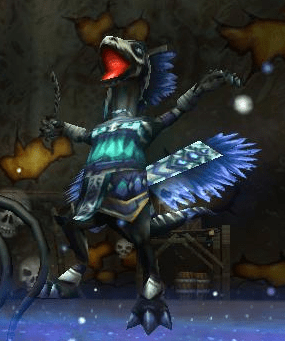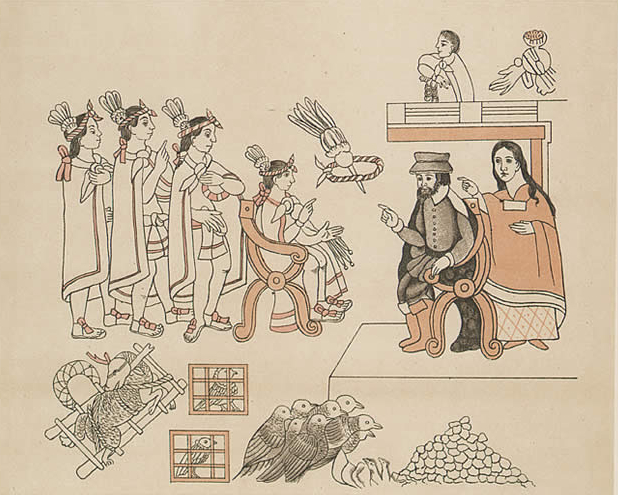Malinche Tears of Night – La Malinche, translator for Cortez, victim or traitor?
https://www.wizard101central.com/wiki/Creature:Malinche_Tears_of_Night
https://en.wikipedia.org/wiki/La_Malinche
Malinche Tears of Night is a corrupt Moon Skull Priestess left by the Shadow Queen. She has the amber key that you need to pass through the Amber Giant, a dormant volcano.
My eyes bleed black blood at the thought of you standing there, whole, not suffering! Let me turn you into something Undead!
Malinche Tears of Night
Monstrology Tome Description: Her eyes bleed black blood. It’s a medical condition, you shouldn’t make fun.
Malinche is known by many names, though her birth name is unknown. The Nahua called her Malintzin, derived from Malina, a Nahuatl rendering of her Spanish name, and the honorific suffix -tzin. According to historian Camilla Townsend, the vocative suffix -e is sometimes added at the end of the name, giving the form Malintzine, which would be shortened to Malintze, and heard by the Spaniards as Malinche.
She was called Malinche, which in the Mexican tongue means “twisted grass”. In Mexico today, her name symbolizes the very essence of treachery and betrayal. For nearly five centuries the image of this beloved or well-hated figure (depending on who you ask) has been ingrained in the Mexican psyche as either one of the founders of Mexico or as the national Judas (again depending on who you ask).
Early in his expedition to Mexico, Cortés was confronted by the Maya at Potonchán. In the ensuing battle, the Mayas suffered significant loss of lives and asked for peace. In the following days, they presented the Spaniards with gifts of food and gold, as well as twenty enslaved women, including Malinche.
Malinche’s language skills were discovered when the Spaniards encountered the Nahuatl-speaking people at San Juan de Ulúa. Moctezuma’s emissaries had come to inspect the peoples, but Aguilar could not understand them. Historian Gómara wrote that, when Cortés realized that Malinche could talk with the emissaries, he promised her “more than liberty” if she would help him find and communicate with Moctezuma.
For the conquistadores, having a reliable interpreter was important enough, but there is evidence that Marina’s role and influence were larger still. Bernal Díaz del Castillo, a soldier who, as an old man, produced the most comprehensive of the eye-witness accounts, the Historia verdadera de la conquista de la Nueva España (“True Story of the Conquest of New Spain”), speaks repeatedly and reverentially of the “great lady” Doña Marina (always using the honorific title Doña). “Without the help of Doña Marina”, he writes, “we would not have understood the language of New Spain and Mexico.” Rodríguez de Ocaña, another conquistador, relates Cortés’ assertion that after God, Marina was the main reason for his success.
Malinche’s image has become a mythical archetype that Hispanic-American artists have represented in various forms of art. Her figure permeates historical, cultural, and social dimensions of Hispanic American cultures. In modern times and several genres, she is compared with the La Llorona (folklore story of the woman weeping for lost children), and the Mexican soldaderas (women who fought beside men during the Mexican Revolution) for their brave actions.
La Malinche’s legacy is one of myth mixed with legend and the opposing opinions of the Mexican people about the legendary woman. Some see her as a founding figure of the Mexican nation, while others continue to see her as a traitor.
The current list of all the (known) Azteca references are located here.
Although I am well versed in Pop Culture references, I do not claim to have caught them all. Let me know your favorites in the comments and if I’ve missed one you caught, let me know so I can add it to the list.
Text for this article is excerpted from the linked wiki pages.
Malinche Tears of Night image is from Wizard101, and is copyright of KingsIsle Entertainment.
Donna Marina (La Malinche), from “The Mastering of Mexico” by Kate Stephens (1916) New York: The MacMillan Company. Illustration between pages 64-65. This image is borrowed from Wikipedia and is in the public domain.
Cortez, La Malinche and Moctezuma image is from the “Lienzo de Tlaxcala” by way of the Bancroft Library. It is borrowed from Wikipedia and is in the public domain


